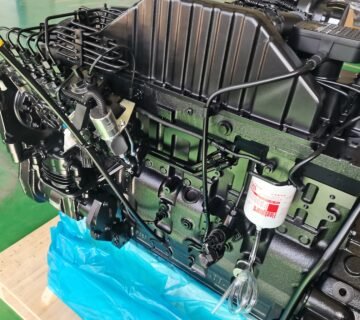The Impact of EGR (Exhaust Gas Recirculation) on Cummins Engine Efficiency
If you’ve ever wondered how modern diesel engines balance power and emissions, you’re not alone. One key player in this balancing act is Exhaust Gas Recirculation (EGR)—a technology that’s been both praised and debated in the diesel world. Let’s break down how EGR affects Cummins engine efficiency, why it matters, and what you need to know to keep your rig running smoothly.

What Is EGR and Why Do Cummins Engines Use It?
EGR is like a “recycling program” for your engine’s exhaust. It redirects a portion of exhaust gases back into the combustion chamber, lowering peak temperatures during fuel burning. Cooler combustion means fewer nitrogen oxides (NOx)—those nasty pollutants linked to smog and health issues.
Cummins engines adopted EGR systems back in the early 2000s to meet stricter EPA emissions rules. While competitors like Detroit Diesel initially leaned on other tech, Cummins doubled down on refining EGR to keep engines both clean and powerful.
The Good: How EGR Boosts Emissions Control
Let’s start with the upside. EGR helps Cummins engines hit emissions targets without sacrificing reliability. Here’s how:
– Reduces NOx by up to 50%: By cooling combustion, EGR cuts the formation of NOx, making aftertreatment systems (like SCR) work less hard.
– Works with older engines: Unlike SCR, which requires DEF fluid, EGR can be retrofitted to pre-2010 Cummins models for basic emissions compliance.
– Simpler setup for some applications: For off-road or industrial equipment, EGR avoids the need for DEF tanks and sensors.
For example, the Cummins ISX12 uses a cooled EGR system to meet EPA Tier 3 standards while maintaining the torque needed for heavy hauling.
The Not-So-Good: Efficiency Trade-Offs
But here’s where things get tricky. EGR isn’t free—it comes with efficiency costs that can hit your wallet:
- Lower Fuel Economy: Recycling exhaust gas means less oxygen in the combustion chamber. This forces the engine to work harder, dropping fuel efficiency by 3–5% in models like the Cummins 6.7L.
- Heat Stress: EGR runs exhaust gases through the engine again, increasing heat load. This can strain components like turbochargers and valves over time.
- Maintenance Headaches: Soot buildup in EGR coolers and valves is common, leading to clogs or failures if not cleaned regularly.
A trucker running a Cummins X15 with EGR might save on DEF costs but spend more on diesel and EGR maintenance compared to a newer SCR-only model.
EGR vs. SCR: Why Cummins Uses Both
You might ask: *“If EGR hurts efficiency, why not ditch it for SCR?”* The answer? Cummins doesn’t pick sides—it uses both technologies to maximize results. Newer engines like the Cummins X12 combine EGR with SCR to:
– Meet ultra-low NOx limits (like California’s 0.02 g/bhp-hr).
– Recover some lost efficiency through better turbocharging and fuel injection.
– Reduce DEF consumption by letting EGR handle part of the NOx reduction.
Think of it like a teamwork approach: EGR does the heavy lifting on NOx, while SCR fine-tunes the results.
How to Keep EGR from Killing Your Fuel Mileage
EGR doesn’t have to be a fuel economy nightmare. Here are pro tips to minimize its impact:
- Stick to Maintenance Schedules: Clean EGR valves and coolers every 100,000 miles (or sooner if you idle a lot).
- Upgrade Your Turbocharger: Aftermarket turbos like the Holset HE500 improve airflow, offsetting EGR’s oxygen reduction.
- Use High-Quality Fuel: Low-sulfur diesel and additives prevent soot buildup in EGR components.
- Tune Smartly: Light ECU tunes can optimize EGR flow rates without tripping fault codes.
A logging company in Oregon reported a 2% fuel efficiency boost on their Cummins QSK19 engines just by switching to synthetic EGR cooler cleaners.
The Future of EGR in Cummins Engines
EGR isn’t going away—it’s evolving. Cummins is testing next-gen EGR systems with:
– Electric EGR Coolers: Precisely control temperatures for better efficiency.
– AI-Driven Flow Management: Adjust EGR rates in real time based on load and altitude.
– Hybrid Combustion Modes: Pair EGR with hydrogen injection to cut emissions further.
These innovations aim to reduce EGR’s downsides while keeping its emissions benefits.

The Bottom Line
EGR is a double-edged sword for Cummins engines. It’s essential for cleaning up NOx but can nibble away at fuel economy if ignored. The good news? With smart maintenance and tech upgrades, you can tilt the balance toward efficiency.
Whether you’re running a fleet of Cummins-powered semis or a single backup generator, understanding EGR helps you make informed choices—saving money and the planet, one mile at a time.





No comment